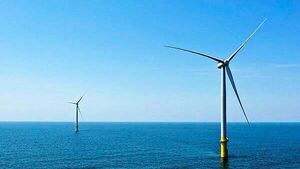Ireland risks ‘missing the boat’ on offshore wind due to lack of capacity

Kenneth Fox
Ireland risks 'missing the boat' on offshore wind energy due to a lack of port capacity.
New research from Next Generation Energy Systems (NexSys) in DCU finds that 2030 offshore wind targets cannot be met by existing port space.
Ireland's ambitious offshore renewable energy (ORE) targets are at risk due to a critical lack of suitable port infrastructure, according to a new policy paper published on Thursday by NexSys researchers.
The paper, authored by Dr James G. Carton and Bill Duggan, highlights a significant gap in Ireland's strategy for achieving its climate action and energy security goals.
The policy paper reveals that Ireland currently has no marshalling ports fully equipped to handle large-scale offshore wind projects.
While the Climate Action Plan 2025 retains a target of at least five GW of offshore wind capacity by 2030, and the Future Framework for Offshore Wind aims for 20 GW by 2040, the country has only 44 hectares of planned laydown space for offshore wind, a fraction of what is needed.
The paper's key findings indicate that to meet its targets, Ireland will require four dedicated ORE marshalling ports.
This contrasts with the current situation, where only two ports, Cork Ringaskiddy and Rosslare Europort, are even engaged in early planning for ORE marshalling. The authors argue that a Government-managed, coordinated, and plan-led approach is urgently needed to address this deficit.
"Without immediate and decisive intervention, port capacity will endanger the delivery of our committed offshore wind targets.
"This is a once-in-a-generation opportunity for economic growth, job creation, and energy security, but we risk missing the boat entirely." Dr Carton said.
The paper estimates that a total investment of €2-€3 billion is required to develop the necessary port infrastructure to handle ORE activities.
In contrast, the National Development Plan has committed over €5 billion for domestic and international grid and transmission infrastructure, but no funding has been allocated for marshalling ports.
The policy paper recommends several key actions to overcome this barrier:
-Create a National Implementation Plan: A Government-led strategy is needed to coordinate ORE development at ports, ensuring it aligns with national interests rather than individual port decisions;
-Maximise Quayside Space: The immense size of modern wind turbine components requires significantly more laydown space than currently planned. A 1 GW project, for example, requires 40-80 hectares;
-Adopt a Specialised Multi-Port Approach: To improve efficiency and reduce costs, ports should specialise in either foundation or turbine marshalling, a strategy used successfully in 67 per cent of global ORE projects;
-Secure Capital Funding: Ports lack the balance sheet capacity to fund the required development without Government support, loans, or grants.






